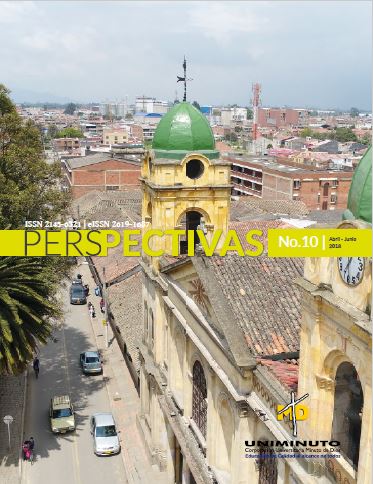The capital market and its relationship with sustainable development an approach to the current scenario from a documentary review
Main Article Content
Abstract
Considering the current trends of the global market, where the compliance with global agreements on sustainability is becoming increasingly important, the significance of carrying out this research project is established, which aims to identify the current state of application of sustainability principles in the world’s most important stock exchanges, and the main lessons learned in the management process towards achieving elements of social and environmental equilibrium in capital markets were identified.
We start from a methodological process of document analysis (processing and retrieval of information contained in technical documents) published by both regulatory and academic international organizations. Three methodological moments are established while carrying out the research: The first one focuses on the analysis of scientific documents listed in specialized databases. The second one is aimed at analyzing publications issued by multinational organizations and the various stock exchanges worldwide. Finally, the third one is the systematization of the findings as a compendium, to be taken into account in subsequent phases of research applied to Colombia with regards the subject of study.
Partial results revealed the increase of activities and spaces that favor the application of sustainability elements in stock exchanges around the world. Currently, 52 stock exchanges are identified that have made a public commitment to promote sustainability in their market with results that directly contribute to the fulfillment of four sustainable development objectives (SDOs) in the territories where their market activities have influence.
References
Caballero, G. (2011). Economía de las instituciones: de Coase y North a Williamson y Ostrom. Ekonomiaz, 77, 14-51. Recuperado de www.euskadi. eus/web01.../es/k86a EkonomiazWar/ekonomiaz/downloadPDF
Easterly, W. (2013). One Day in Bogota. En The Tyranny of Experts (p. 107). Nueva York: Basic Book.
onu. (2000). Objetivos del desarrollo del millenio. Recuperado de http://www.un.org/sustainabledevelopment/es/
onu. (2015). Objetivos del desarrollo sostenible Agenda 2030. Recuperado de http://www.un.org/sustainabledevelopment/es/la-agenda-de-desarrollo-sostenible/
onu. (2015). Proyecto de documento final de la cumbre de las Naciones Unidas para la aprobación de la agenda para el desarrollo después de 2015. Recuperado de http://www.un.org/es/comun/ docs/?symbol=A/69/L.85 de 10 de 2017
Ostrom, E., Janssen, M. A., & Anderies, J. M. (2007). Going beyond panaceas. Proceedings of the National Academy of Sciences. Recuperado de http:// www.pnas.org/content/104/39/15176.full
Quiroga, M. (2001). Indicadores de sostenibilidad ambiental y de desarrollo sostenible: estado del arte y perspectivas. Santiago de Chile: CEPAL
Rojas, I. R. (2011). Elementos para el diseño de técnicas de investigación: Una propuesta de definiciones y procedimientos en la invetigación científica. Tiempo de Educar, 277-297. Recuperado de http://www.redalyc.org/articulo. oa?id=31121089006
Rodrik, D. (2011). Una economía, muchas recetas. La globalización, las instituciones y el crecimiento económico. México: FCE.
Rostow, W. W. (1960). The Stages of Economic Development: A Non-Communist Manifesto. New York: Universidad de Cambridge.
Sampieri, R. H. (2014). Metodología de la investigación. México: McGraw-Hill Interamericana
Sayonara Fernandes, D. C, & Boente., D. R. (2011). Evaluation of Financial Performance of Corporate Sustainability Index Companies through Data Envelopment Analysis. Revista Ambiente Contabil, 75-99. Recuperado de https://searchproquest-com.ezproxy.uniminuto.edu/abicomplete/docview/1692507923/C8ED8E009AB 04E26PQ/44?accountid=48797
sse. (2009). Sustainable Stock Exchanges Initiative. Recuperado de http://www.sseinitiative.org
Stiglitz, J. E. (1989). Markets, Market Failures, and Development. The American Economic Review, 79(2), 197-203. Recuperado de https://www. jstor.org/stable/1827756?seq=1

